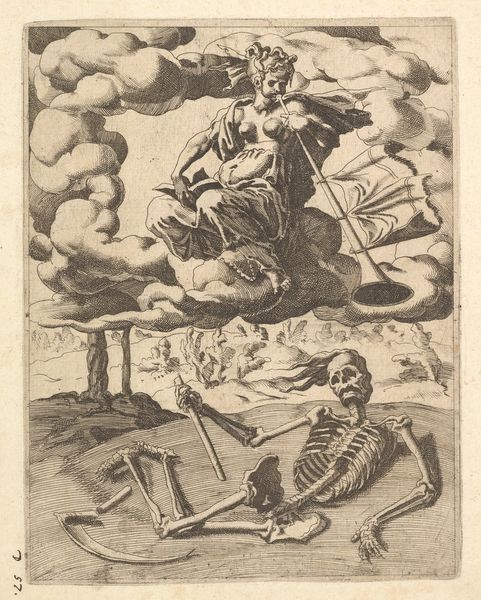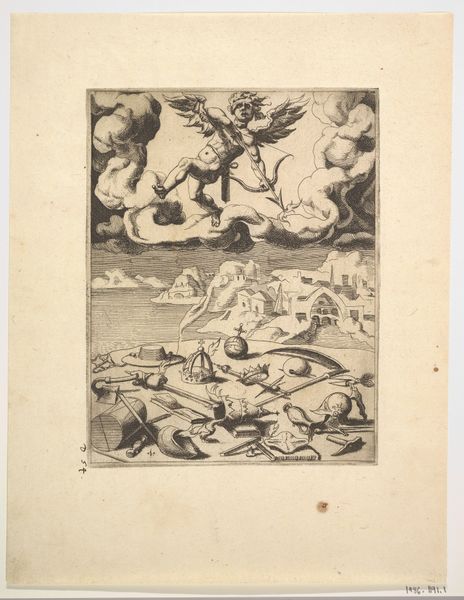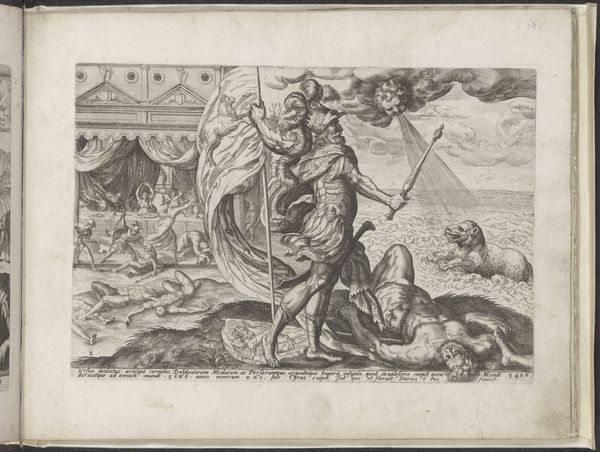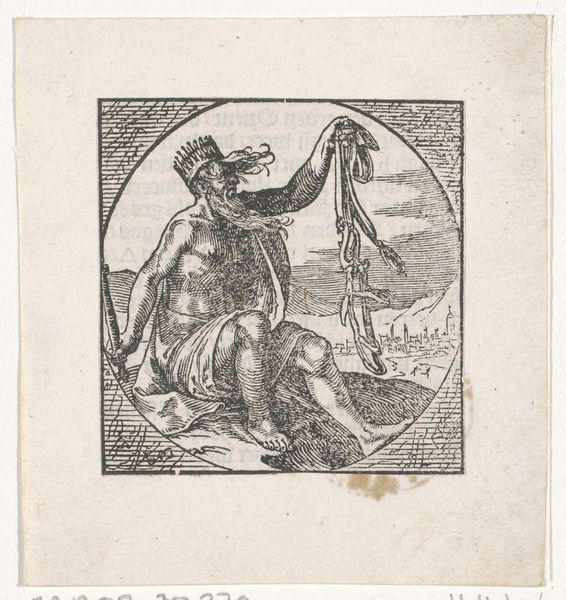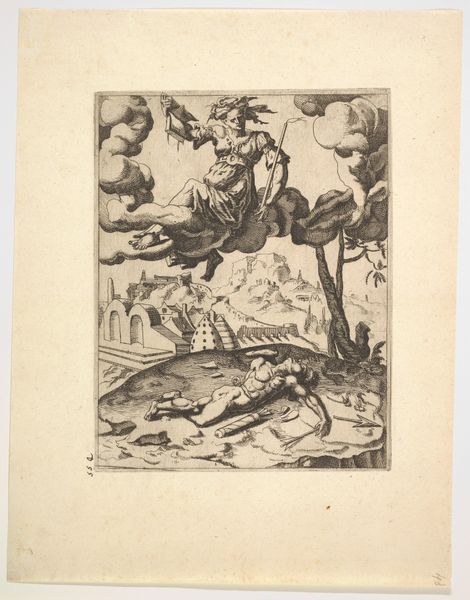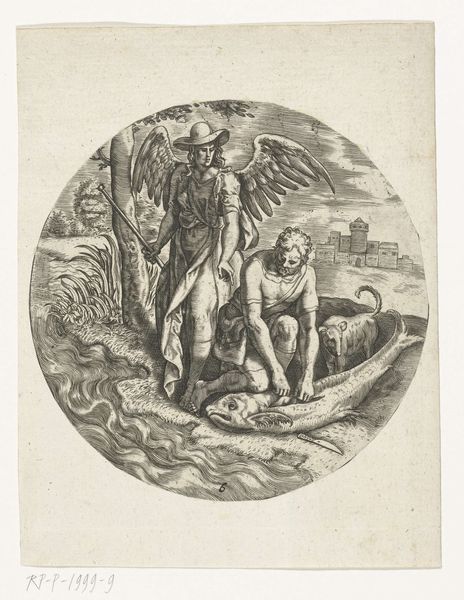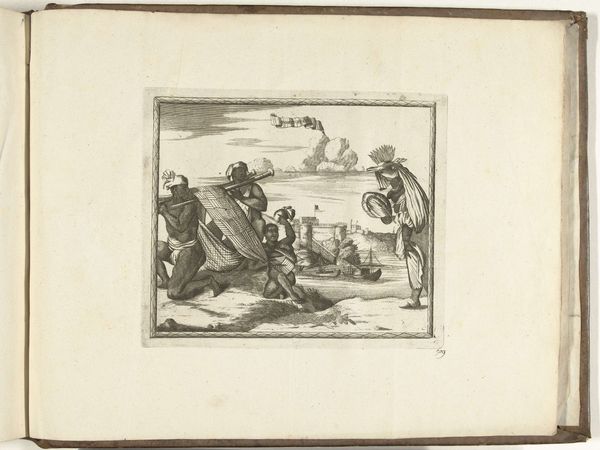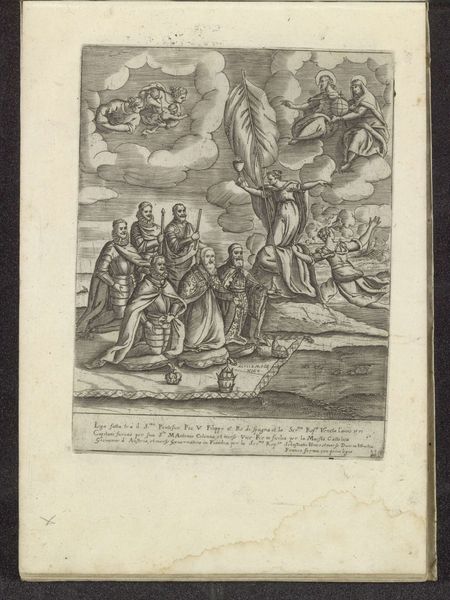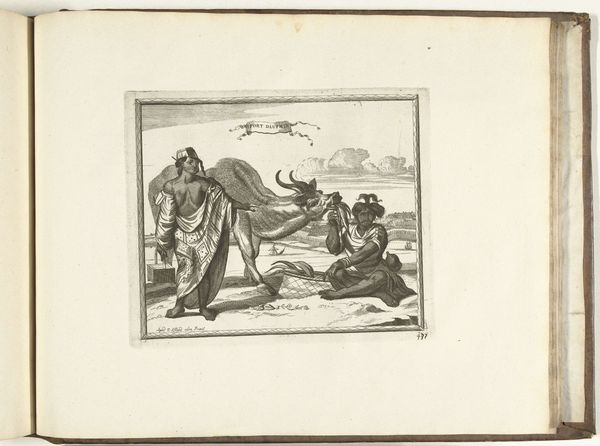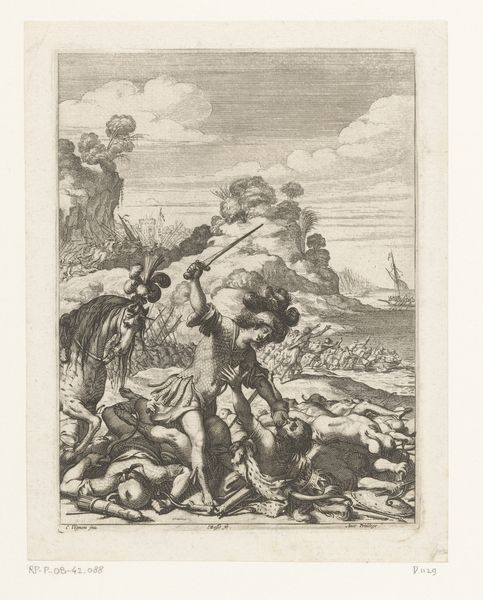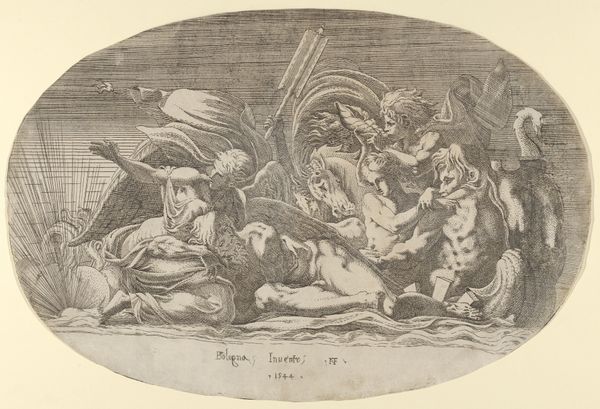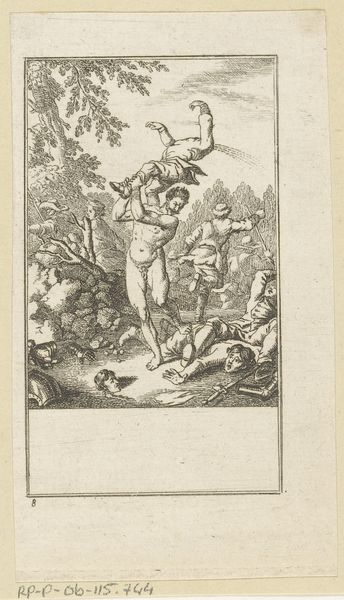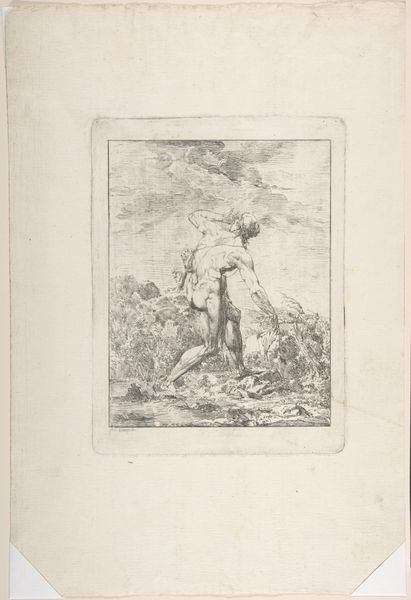
The Triumph of Divinity or Eternity from The Triumphs of Petrarch 1543 - 1553
0:00
0:00
drawing, print, engraving
#
drawing
#
allegory
# print
#
figuration
#
line
#
history-painting
#
italian-renaissance
#
engraving
#
christ
Dimensions: Plate: 9 1/16 x 6 15/16 in. (23 x 17.7 cm) Sheet: 13 7/16 x 10 3/8 in. (34.1 x 26.4 cm)
Copyright: Public Domain
Curator: This engraving, "The Triumph of Divinity or Eternity from The Triumphs of Petrarch," dates back to the mid-16th century, made sometime between 1543 and 1553. It's currently housed at the Metropolitan Museum of Art. Editor: It's so incredibly… assertive, isn’t it? All those triumphant figures emerging from swirling clouds. The etching emphasizes line work; it gives the scene a dramatic intensity that hits you right away. Curator: It's the dynamism of the Italian Renaissance seeping through! The artwork comes from a series illustrating Petrarch's allegorical poem. Dirck Volckertsz Coornhert, the artist, captured these scenes initially as drawings and later translated them into prints, making them accessible to a wider audience. Editor: Wider accessibility...it brings up the question, doesn't it, about how images like these cemented ideas around power. I mean, look at Divinity, enthroned above earthly chaos and clutching that almost cartoonishly oversized cross. It's a very specific… brand of triumph, wouldn’t you say? Curator: Absolutely. The series aimed to convey messages about earthly versus divine love. These images had profound political impacts. The visual language created by engravers such as Coornhert played a pivotal role in conveying authority. Divinity, for instance, stands with a rather commanding pose over everything... Eternity indeed. Editor: Yes, and notice the little details like those suffering figures crushed at the bottom. A visual shorthand to highlight the reward that awaits believers in a better life; these kinds of engravings played a role in enforcing and communicating faith throughout the population. What are your final thoughts about this image? Curator: The print achieves remarkable artistic merit with linear clarity that continues to intrigue the observer. As an artwork it continues to offer us insight to not just the Renaissance's values, but also what's on our present societal condition and ideals.
Comments
No comments
Be the first to comment and join the conversation on the ultimate creative platform.

